
Switches | Outlets & Plugs | Ballasts | Replace Ballasts | LED Tube Lights | Troubleshooting | Basic Electricity | Misc Articles
About Privacy Policy Sitemap Copyright © 2025 Electrical101.com Terms of Use

Wire Nuts (Wire Connectors)
Blue Wire-
Orange Wire-
Yellow Wing-
Tan Twister Commonly used to connect 2 to 3 #14 or #12 wires.
Red Wing-
Data Phone Wire Butt Splice Connectors
Data and phone wires are very small in diameter at 22 to 24 AWG. These wires are used for telephone, computer data, and garage door opener wiring and are to be used for low voltage only. Butt splice connectors are used to connect two or more wires together.
These wires are stripped (or not, see instructions) and inserted into the connectors. A pliers or crimping tool can be used to squeeze the top and bottom of the connector together to make the connections.
The image to the right is of garage door opener wiring connected with telephone wire butt splice connector.
How to Install Twist-
- Turn power off.
- Strip wires, usually about ½ inch for two wires. Strip about ¾ to 1 inch for more than two wires. Lead stranded wire(s) beyond the solid wire(s) by about 1/16 inch(1.6mm).
- Align frayed strands and conductors.
- Hold wire ends together evenly.
- Insert wires into the connector and screw on clockwise until the connector stops twisting.
- Lightly pull on each wire to ensure the wires are secured inside of the connector.
The connector should stop twisting after step 5. If it does not stop twisting or if a wire comes loose when pulling in step 6, undo the connection and start over again. Another size connector may be needed to make a proper connection.
Push-in Wire Connectors
It is very easy to connect wires into push-
Never use push-
IDEAL Industries first wire connector was called wire-
Twist-On Wire Nuts
Wire connectors are used to connect two or more wires together. There are many types of wire connectors, the most common are twist-
Ideal Wire Range Chart -
Ideal Wire Connector Brochure -
Types of Wire Connectors
Wire connector size depends upon the wire gauges and number of wires connected together. Wire connectors packages show the minimum and maximum wires and sizes allowed. Avoid using the minimum and maximum sizes and numbers.
Twister® -
Wire-
Wing-
WireTwist® -
Wire-
Wire-
Wing-
Twister
Wing-
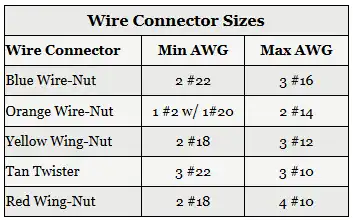
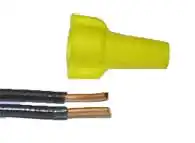
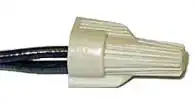

Wire Nuts

Butt splice
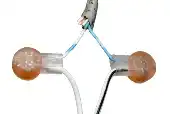
Butt splice
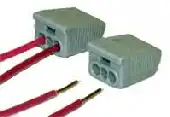
Push-